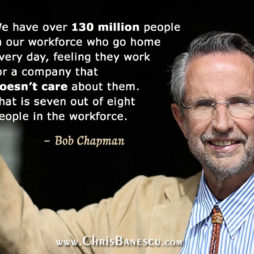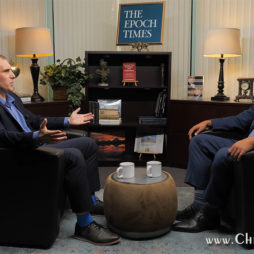 by Tony Schwartz –
by Tony Schwartz –
The way most of us work isn’t working. Study after study has shown that companies are experiencing a crisis in employee engagement. A 2007 Towers Perrin survey of nearly 90,000 employees worldwide, for instance, found that only 21% felt fully engaged at work and nearly 40% were disenchanted or disengaged. That negativity has a direct impact on the bottom line. Towers Perrin found that companies with low levels of employee engagement had a 33% annual decline in operating income and an 11% annual decline in earnings growth. Those with high engagement, on the other hand, reported a 19% increase in operating income and 28% growth in earnings per share.
Nearly a decade ago, the Energy Project, the company I head, began to address work performance and the problem of employee disengagement. We believed that burnout was one of its leading causes, and we focused almost exclusively on helping individuals avoid it by managing their energy, as opposed to their time. Time, after all, is finite. By contrast, you can expand your personal energy and also regularly renew it.
Once people understand how their supply of available energy is influenced by the choices they make, they can learn new strategies that increase the fuel in their tanks and boost their productivity. If people define precise times at which to do highly specific activities, these new behaviors eventually become automatic and no longer require conscious will and discipline. We refer to them as rituals. They’re simple but powerful. They include practices such as shutting down your e-mail for a couple of hours during the day, so you can tackle important or complex tasks without distracting interruptions, or taking a daily 3 PM walk to get an emotional and mental breather.
What we failed to fully appreciate in our early work was that once we finished our sessions with employees and sent them back into the workplace, they often ran into powerful organizational resistance to the very principles and practices we’d taught them. We still believe that enduring organizational change is possible only if individuals alter their attitudes and behaviors first. But we’ve come to understand that it’s not possible to generate lasting cultural change without deeply involving an organization’s senior leadership.
In this article, we’ll describe the transformation we helped initiate at Sony Pictures Entertainment, a company that has embraced energy-building and -renewing rituals at all levels. Based in Culver City, California, Sony Pictures produces, markets, and distributes movies and TV shows. So far, more than 3,000 of the company’s 6,300 employees worldwide have gone through our energy-management program. This summer we’ll reach another 1,700 in Europe, Singapore, and Latin America.
To date, the reaction to the program has been overwhelmingly positive. Eighty-eight percent of participants say it has made them more focused and productive. More than 90% say it has helped them bring more energy to work every day. Eighty-four percent say they feel better able to manage their jobs’ demands and are more engaged at work. Sony’s leaders believe that these changes have helped boost the company’s performance. Despite the recession, Sony Pictures had its most profitable year ever in 2008 and one of its highest revenue years in 2009 (though an industrywide collapse in DVD sales forced the company to do a round of layoffs early in 2010).
As we have done at many other organizations, we encouraged Sony to make two fundamental shifts in the way it manages employees. The first was to stop expecting people to operate like computers—at high speeds, continuously, running multiple programs at the same time—and to recognize that human beings perform best and are most productive when they alternate between periods of intense focus and intermittent renewal. The second was to move from trying to get more out of employees and instead to invest in systematically meeting their four core needs, so they’re fueled and inspired to bring more of themselves to work every day. These four core needs are physical health (achieved through nutrition, sleep, daytime renewal, and exercise), emotional well-being (which grows out of feeling appreciated and valued), mental clarity (the ability to focus intensely, prioritize, and think creatively), and spiritual significance (which comes from the feeling of serving a mission beyond generating a profit).
HT: Harvard Business Review (article originally published in June 2010)



